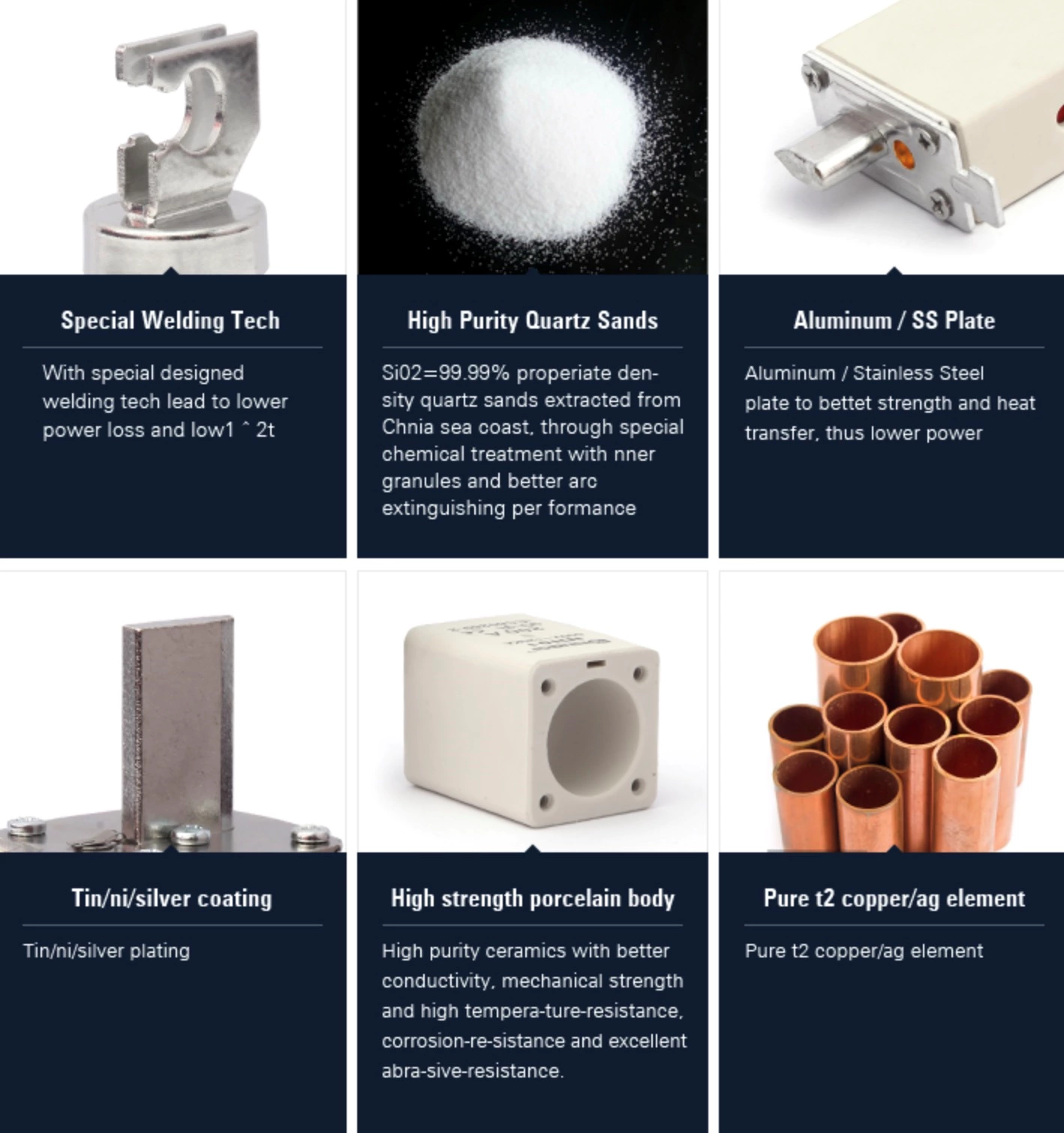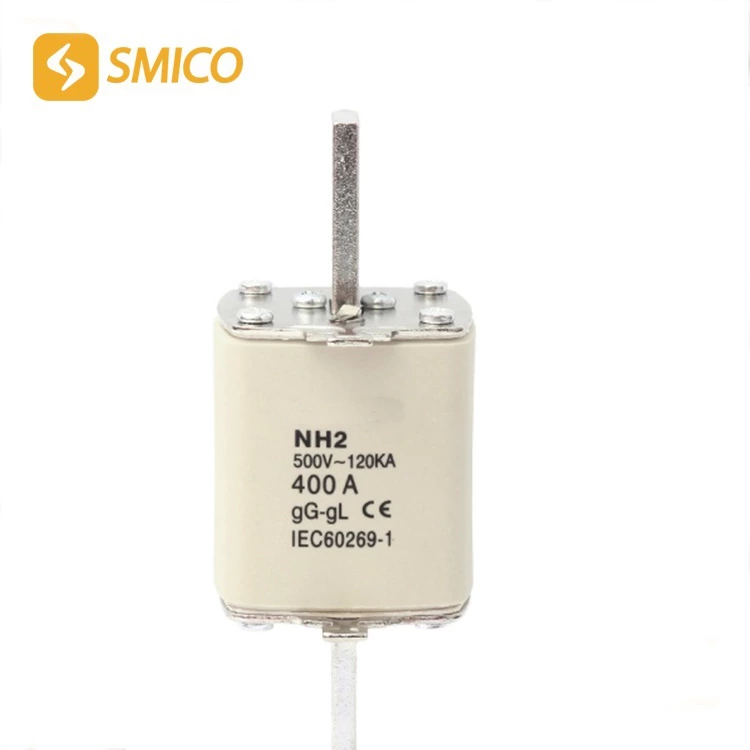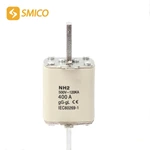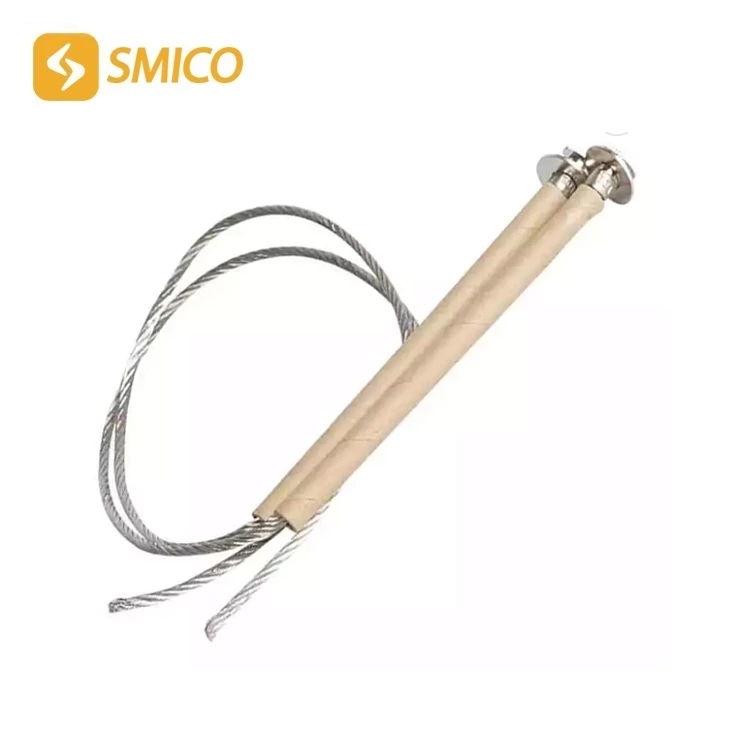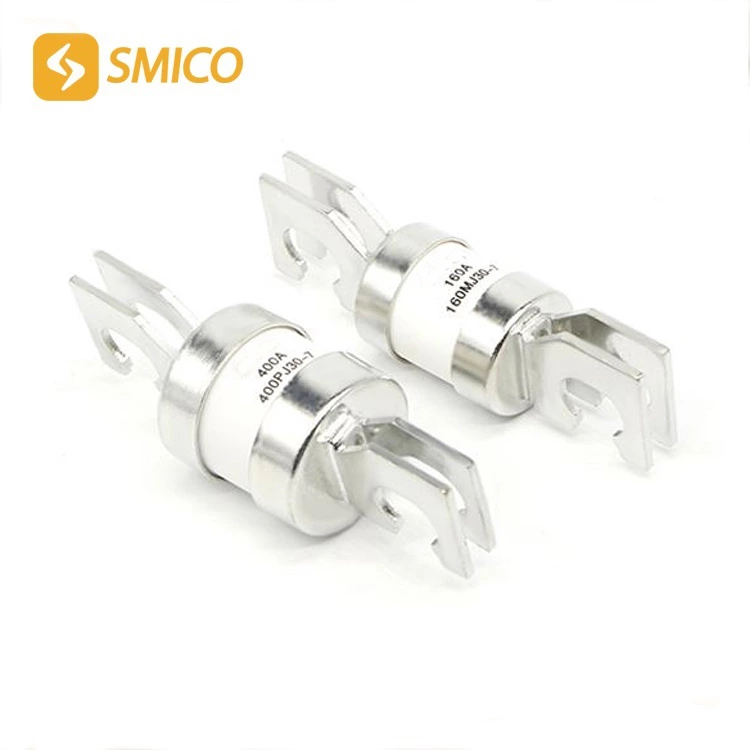NT2 Fuse Link Blade HRC
- Product Name:
- Fuse Link Blade HRC
- Model Number:
- NT2 fuse link
- Standard:
- IEC 60269-1 ,IEC 60269-2,GB13539
- Supply Ability:
- 100000/month
- Voltage:
- 400V, 500V, 690V
NT2 fuse link blade HRC
Description:
Low power loss NH(NT) fuses & fuse bases for industrial protection, conform to Class GL/GG and Class aM. General industrial applications or for the protection of motor circuits.
Size 00C,00, 0, 1C,1,2C,2, 3C, 3, 4
Description: Low power loss NH(NT) fuses & fuse bases for industrial protection, conform to Class GL/GG and Class aM. General industrial applications or for the protection of motor circuits. Version with voltage free metal gripping lugs for insulated fuses.White ceramic available.

| Size | In (A) | A | B | C | D | E | F | H |
| 000 | 6, 10, 16, 20, 25, 32, 40, 50, 63, 80, 100 | 78.5 | 49.5 | 15 | 21 | 10 | 6 | 48 |
| 00 | 10, 16, 20, 25, 32, 40, 50, 63, 80, 100, 125, 160 | 78.5 | 50 | 15 | 30 | 10 | 6 | 56 |
| 0 | 20, 25, 32, 40, 50, 63, 80, 100, 125, 160 | 125 | 66 | 15 | 30 | 10 | 6 | 56 |
| 1C | 20, 25, 32, 40, 50, 63, 80, 100, 125, 160 | 135 | 66 | 15 | 30 | 10 | 6 | 56 |
| 1 | 32, 40, 50, 63, 80, 100, 125, 160, 200, 250 | 135 | 65 | 20 | 48 | 10 | 6 | 62 |
| 2C | 50, 63, 80, 100, 125, 160, 200, 250 | 150 | 65 | 20 | 48 | 10 | 6 | 62 |
| 2 | 63, 80, 100, 125, 160, 200, 250, 315, 355, 400 | 150 | 67 | 25 | 58 | 10 | 6 | 71.5 |
| 3C | 160, 200, 250, 315, 355, 400 | 150 | 67 | 25 | 58 | 10 | 6 | 71.5 |
| 3 | 315, 355,400, 500, 630 | 150 | 68 | 32 | 67 | 10 | 6 | 84 |
| 4 | 630, 800, 1000, 1250, 1600 | 200 | 83 | 50 | 88 | 10 | 6 | 112 |
Fuse (also called insurance) can be divided into two parts: fuse holder and fuse core.
The fuse core is referred to as the fuse core.
The fuses are represented as FU1, FU2, FU3, etc., which play a role in overcurrent protection. When an over-current (or short-circuit) fault occurs, the fuse core is blown; to restore the power supply, a new fuse core must be replaced.
Commonly known as a fuse, it plays a role in over-current protection.
NT3 fuse is suitable for AC 50Hz, rated current up to 800A, mainly used for line overload and short circuit protection in electrical installations. The rated breaking capacity of this fuse reaches 120KA.
1. Structural features:
The variable cross-section melt made of pure copper is encapsulated in a melt tube made of high-strength porcelain; the melt tube is filled with chemically treated high-purity quartz sand as the arc extinguishing medium. The two ends of the melt are firmly electrically connected with the end plate by spot welding, forming a knife-shaped contact plug-in structure. The fuse can be equipped with a fuse indicator, which can display the fuse or convert it into various signals and automatically switch the circuit when the fuse is blown.
2. Working conditions:
1. Ambient air temperature:
a. The highest ambient air temperature does not exceed 40℃
b. The 24-hour average of ambient air temperature does not exceed 35℃
c. The lower limit of ambient air temperature is not lower than -5℃
2. Altitude: The altitude of the installation site does not exceed 2000m
3. Atmospheric conditions: the air should be pure and clean. When the maximum temperature is 40℃, the relative humidity should not exceed 50%; higher relative humidity is allowed at lower temperature; for example, 90% at 20℃, under this condition , Due to temperature changes can cause accidental condensation.
What material is the fuse core?
Melt materials are divided into two types: low melting point and high melting point. Low melting point materials such as lead and lead alloys have a low melting point and are easy to fuse. Due to their large resistivity, the cross-sectional size of the melt is larger, and more metal vapors are generated during fuse. It is only suitable for fuse with low breaking capacity. Device. High melting point materials such as copper and silver have high melting points and are not easy to fuse, but due to their low resistivity, they can be made into a smaller cross-sectional size than low melting point melts, and produce less metal vapor during fuse, which is suitable for high breaking Capable fuse. The shape of the melt is divided into two types: filament and ribbon. Changing the shape of the variable cross-section can significantly change the fusing characteristics of the fuse. The fuse has a variety of different fusing characteristic curves, which can be adapted to the needs of different types of protection objects.
